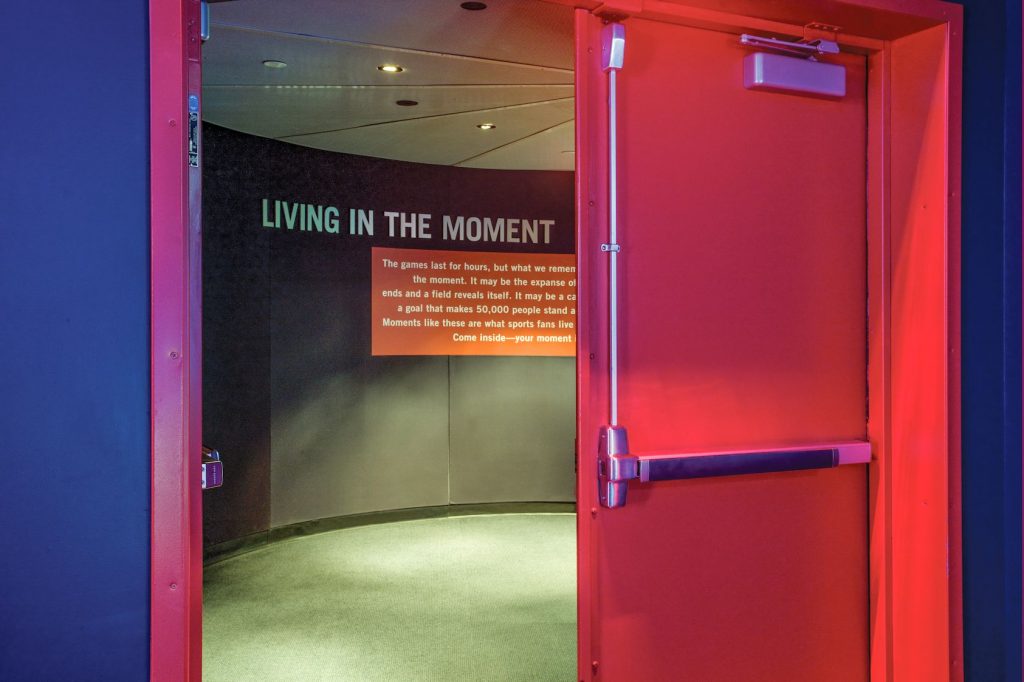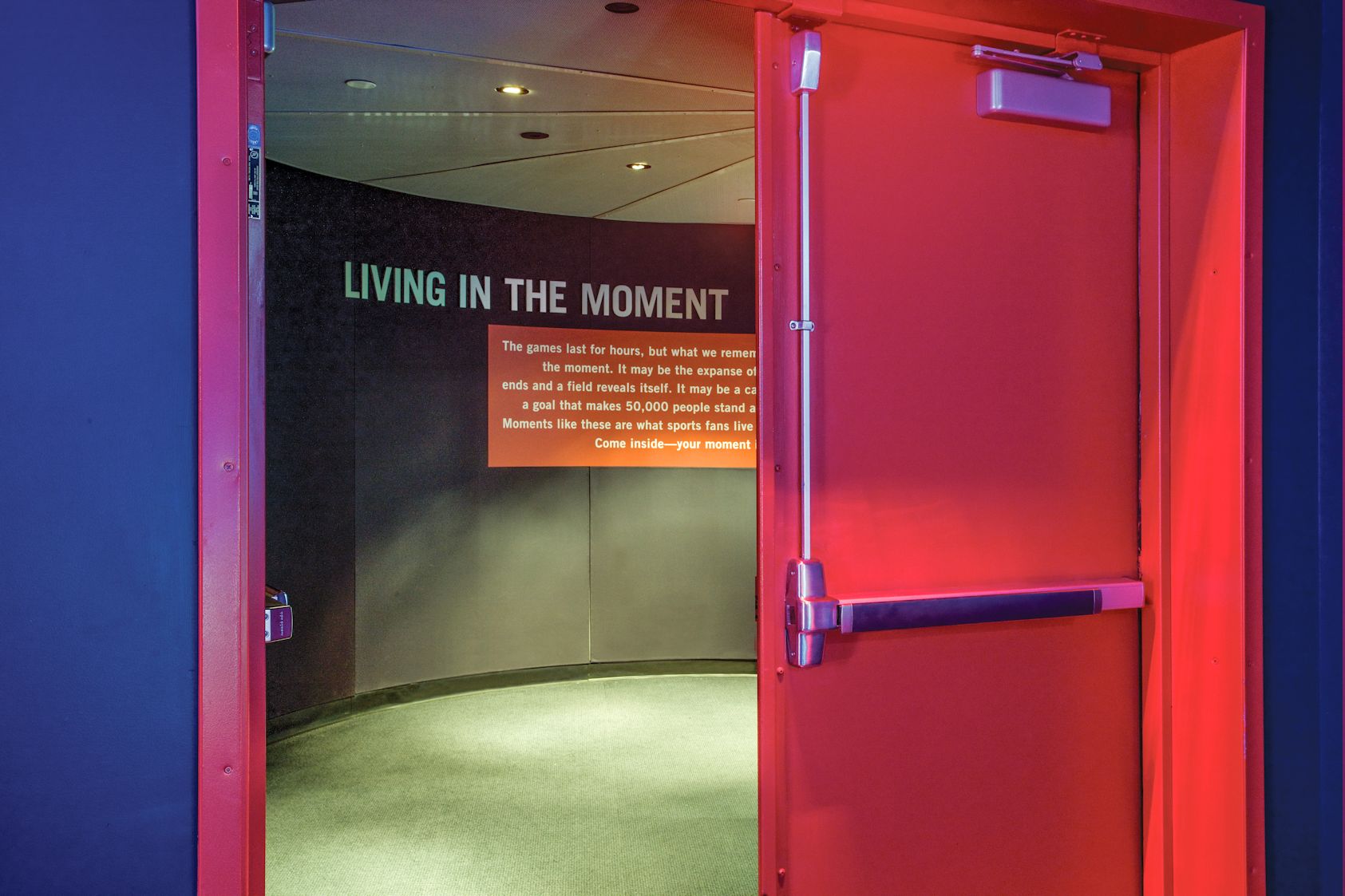This post was published inD.lllloors & Hardware
.

.
 NFPA 80 – Standard for Fire Doors and Other Opening Protectives, classifies openings protected by fire door assemblies in one of five categories. The rating may be expressed in hours or minutes, as an alphabetical designation, or a combination of the two. While using a letter designation is still fairly common, it’s best to include the hourly rating – particularly when specifying or supplying a B-label door which may have either a 60-minute or 90-minute rating.
NFPA 80 – Standard for Fire Doors and Other Opening Protectives, classifies openings protected by fire door assemblies in one of five categories. The rating may be expressed in hours or minutes, as an alphabetical designation, or a combination of the two. While using a letter designation is still fairly common, it’s best to include the hourly rating – particularly when specifying or supplying a B-label door which may have either a 60-minute or 90-minute rating.
Information about NFPA 80’s classifications for fire door assemblies is found in Annex D of the standard. As with the other annexes, Annex D is included for informational purposes and is not part of the NFPA 80 requirements, but it’s helpful to understand the purpose of each type of assembly when specifying and supplying fire door assemblies.
Here is a break-down of the locations where each class of opening protectives is found within a building:
Class A – Fire walls and walls that divide a building into individual fire areas
- In fire walls between buildings or in walls which divide a building into different fire areas, opening protectives typically require a 3-hour rating. Some codes may call for walls with a 4-hour rating, although this is not very common in the US. On rare occasions, two fire door assemblies – each rated for 3 hours – may be required in fire walls that must provide 4 hours of fire resistance. This can prove to be a challenge when the egress and accessibility requirements are factored in.
Class B — Enclosures of shafts and stairwells and 2-hour rated partitions that create horizontal fire separations
- When a wall is required to have a 2-hour rating – typically in enclosures for shafts, interior exit stairways, interior exit ramps, and exit passageways, the rating of the fire door assembly is usually required to be 90 minutes (AKA B-label). Doors with a 60-minute rating are also classified as B-label doors, and are used in some interior exit stairway and ramp enclosures. For example, for most applications the International Building Code (IBC) requires a 2-hour wall (and 90-minute fire doors) when the stair is connecting four stories or more, and a 1-hour wall (and 60-minute fire doors) when the stair is connecting less than four stories. The number of stories includes basement levels but not mezzanines.
Class C — Walls or partitions between rooms and corridors having a fire resistance rating of 1 hour or less
- In a 1-hour wall surrounding a hazardous area, ¾-hour fire door assemblies may be required. For example, the IBC requires some incidental use areas to be surrounded by walls with a fire-resistance rating of 1 hour, and many of those rooms would require 45-minute doors. In recent editions of the IBC, the requirements for incidental use areas are found in Section 509. In some cases, 45-minute fire door assemblies are also used in partitions that subdivide floors of a building.
- In many corridor walls that require a 1-hour fire-resistance rating, fire door assemblies rated for 20 minutes (1/3 hour) may be used. Assemblies rated for 30 minutes (1/2 hour) are not common in the US but are required by some codes used in other countries. Opening protectives with these ratings are used where smoke-control is the main concern, and the 20-minute rating is typically required for the doors between a corridor with a 1-hour rating and dwelling units or sleeping units. They are sometimes used as cross-corridor doors where smoke partitions or smoke barriers are required. Although 20-minute doors are sometimes called “smoke doors,” they may or may not have to comply with the requirements of NFPA 105 – Standard for Smoke Door Assemblies and Other Opening Protectives, depending on the building code requirements.
Class D — Exterior walls subject to severe fire exposure from outside the building, and Class E — Exterior walls subject to moderate or light fire exposure from outside the building
- In exterior walls that are subject to severe fire exposure from the outside, 90-minute doors are typical. When the fire exposure from the outside the building is moderate or light, 45-minute doors may be used. Neither of these applications is very common, but they do arise on projects from time to time.
Although NFPA 80 classifies the various types of openings to be protected by fire door assemblies, the standard does not specify which doors within a building are required to be fire doors. To determine where fire doors are needed, you would refer to the building code that has been adopted in the project’s jurisdiction. For example, in the 2015 IBC, Table 716.5 is called Opening Fire Protection Assemblies, Ratings and Markings. This table includes the required fire rating for opening protectives based on the type of wall assembly and the rating of the wall. In the 2015 edition of NFPA – The Life Safety Code there is a similar table – Table 8.3.4.2 – Minimum Fire Ratings for Opening Protectives in Fire-Resistance–Rated Assemblies and Fire-Rated Glazing Markings.
In some locations, the rating of the fire door assembly is ¾ of the rating of the wall, but this is not always the case. For example, the IBC requires a 3-hour fire wall to have a 3-hour door, and allows a 1-hour corridor wall to have a 20-minute door. When the required rating of the fire door assembly is less than the rating of the wall, it is because the fuel load adjacent to a swinging fire door is likely to be lower than the fuel load near a wall. For this reason, when a fire door assembly is no longer in use, NFPA 80 requires the opening to be filled in order to maintain the required rating of the wall assembly.
A few things to note…
- There are exceptions to the requirements stated above, particularly in health care facilities where fire door assemblies may not be required in some locations even if the wall has a fire-resistance-rating.
- The information about the rating of the fire door and frame is stated on the labels, which must be legible throughout the life of the fire door assembly.
- In some locations (typically stair doors in buildings without a sprinkler system), fire doors may require a temperature-rise rating. Refer to this Decoded article on temperature-rise doors for more information.
- The doors referenced in this article are fire-protection-rated, tested to UL 10C or NFPA 252. If an assembly requires a fire-resistance-rating, the assembly must be tested to UL 263 or ASTM E119, and the rating of the assembly is usually required to be the same as the rating of the wall. The most common applications for fire-resistance-rated assemblies are a) transom and sidelight frames that are listed for more than ¾-hour, and b) fire barriers where the openings exceed the 25% limit established by the IBC. This Decoded article on fire-protection-ratings vs. fire-resistance-ratings includes more in-depth information on these assemblies.
For specific requirements pertaining to fire door assemblies, refer to the codes that have been adopted in a project’s jurisdiction. The code official should be consulted when additional information is needed.
You need to login or register to bookmark/favorite this content.






The sample photo seems to have a problem. I can not see a floor strike for the vertical rods.
AAAAHHH – DARN IT! I zoomed in to look for what was holding the door open, and it distracted me from looking for the strikes. I’ll find a new photo. 🙂
– Lori
The bottom strike would not be required ,if there are fire pins installed
I believe there is approved exit hardware with a head-only strike.
Also, in the article, I believe IBC requires one-hour stairwells to have 60-minute doors.
Hi Joel –
Yes – there is fire exit hardware without the bottom strikes, but it would not have the bottom rods or latches visible in the original photo (I changed the photo).
– Lori
I thought the dimples in the face of the frame were strange till I zoomed in. We’re looking at a pair of STC rated doors in a split “slip-in” frame.
In class A, you write two fire door assemblies each rated 3hrs may be required in a 4hr wall. Do you mean a vestibule is created in such wall with two sets of door to meet this requirement?
When I’ve seen this application on a project, the doors are typically very close together – 2 openings in series with very little space between, which is what creates the egress and accessibility problems.
– Lori
20 minute rated doors – does the door Hardware require UL fire rating?
Hi Emmanuel –
Yes – all hardware that is installed as part of a fire door assembly is supposed to be listed/labeled to UL 10C. There are a couple of exceptions, like hinges that meet the requirements of NFPA 80, and protection plates that are installed in the both 16 inches of the door.
– Lori